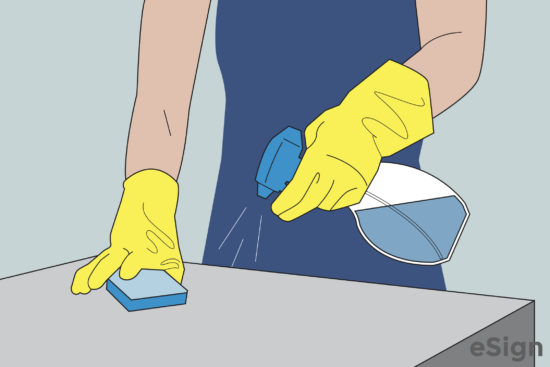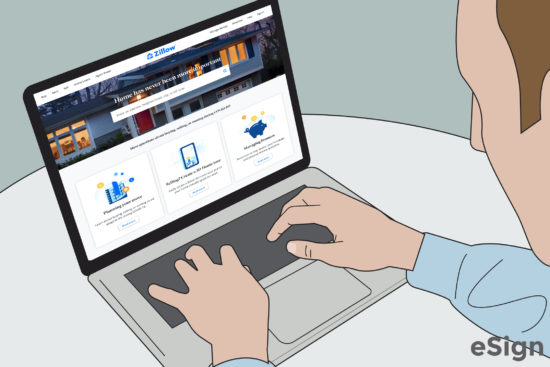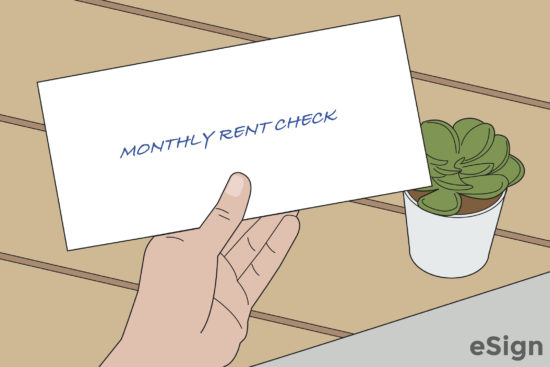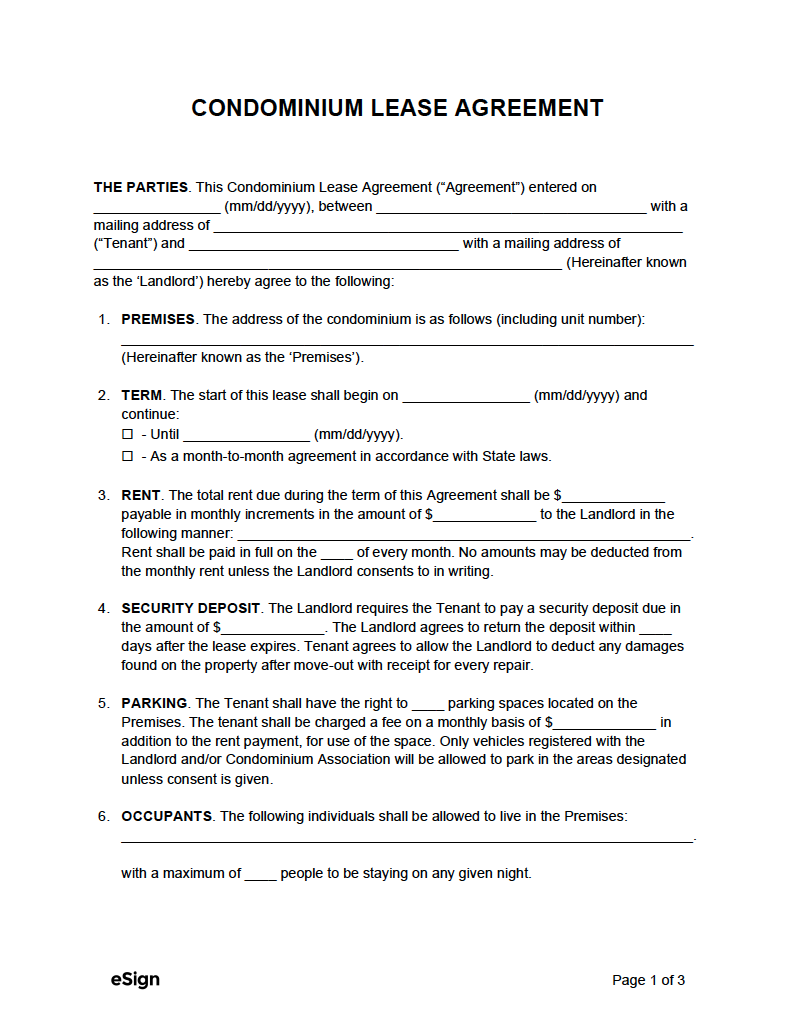How to Rent a Condominium (6 steps)
1. Prepare the Property

- Air vents, heaters, or air conditioner filters
- Fire alarm batteries
- Carbon monoxide batteries
- Fire escape plans
2. Gather Property Information

The landlord should gather the following property information to provide as many details to the tenant as possible:
- Square footage
- Number of bedrooms
- Number of bathrooms
- Furnishings provided
- Appliances provided
- Common areas accessible to the tenant
In addition to gathering the property information, the landlord should obtain a copy of the association’s bylaws for prospective tenants to read prior to moving in.
3. List the Condo

Whether or not the owner will list the condo with a real estate broker, the property can be listed on the following websites:
- Zillow
- Apartments.com
- Craigslist
- Realtor.com
- Airbnb (Short-term rentals)
4. Screen & Approve Applicants

It is recommended that the landlord collects a tenant’s information through a rental application. They should also conduct a background check to look for previous evictions, criminal history, credit issues, and more.
Landlords cannot deny a tenant for anything protected by the Federal Fair Housing Act, which includes anything relating to the applicant’s race, disability, color, national origin, religion, familial status, or sex.
5. Create & Sign the Lease

Once a tenant has been approved, a condominium lease agreement can be downloaded and completed. The landlord should go over the entire agreement with the tenant before both parties sign (either by hand or using eSign). The landlord should then perform the following tasks:
- Collect the first month’s rent
- Collect the security deposit
- Provide the tenant with all keys (main building, unit, and any other accessible areas)
- Provide parking and/or entry passes
- Agree on a move-in date
6. Collect Rent & Monitor Expenses

The landlord will need to collect rent monthly until the lease terminates. Additionally, they should monitor all condo-related expenses, as these can be deducted later.
The owner should be reachable in the event the tenant needs to ask for repairs or help with any other issue. Upon termination of the agreement, the owner should go through the entire unit with a checklist to look for damage.
Sample
Download: PDF, Word (.docx), OpenDocument
CONDOMINIUM LEASE AGREEMENT
1. THE PARTIES. This Condominium Lease Agreement (the “Agreement”) entered on [MM/DD/YYYY], between [TENANT NAME(S)] with a mailing address of
[TENANT ADDRESS] (the “Tenant”) and [LANDLORD NAME] with a mailing address of [LANDLORD ADDRESS] (the “Landlord”), both hereby agree to the following:
2. PREMISES. The address of the condominium is as follows (including unit number): [CONDOMINIUM ADDRESS] (the “Premises”).
3. TERM. The start of this lease shall begin on [MM/DD/YYYY] and continue: (check one)
☐ – Until [MM/DD/YYYY].
☐ – As a month-to-month agreement in accordance with State laws.
4. RENT. The total rent due during the term of this Agreement shall be $[TOTAL RENT] payable in monthly increments in the amount of $[MONTHLY RENT] to the Landlord in the following manner: [RENT PAYMENT METHOD(S)]. Rent shall be paid in full on the [#] of every month.
5. SECURITY DEPOSIT. The Landlord requires the Tenant to pay a security deposit due in the amount of $[SECURITY DEPOSIT]. The Landlord agrees to return the deposit within [#] days after the lease expires. The Tenant agrees to allow the Landlord to deduct any damages found on the property after move-out with a receipt for every repair.
6. OCCUPANTS. The following individuals shall be allowed to live in the Premises: [LIST ALL OCCUPANTS HERE].
7. UTILITIES. The Landlord shall be responsible for providing the following utilities: [LIST ALL UTILITIES TO BE PAID BY LANDLORD].
In addition, the Landlord shall provide the following appliances: [LIST ALL APPLIANCES HERE].
8. PETS. The Landlord: (check one)
☐ – Allows pets on the property with an additional fee of $[PET FEE].
☐ – Shall allow only a certain pet described as [PET TYPE(S)] with an additional fee of $[PET FEE].
☐ – Prohibits any type of pet on the Premises except for those used for special needs in accordance with State or Federal law.
9. USE. The Tenant shall only be able to use the Premises for residential purposes.
10. POSSESSION. The Tenant shall obtain possession of the Premises on the start date stated in Section 3. If not, the Tenant may seek damages from the Landlord. In addition, the Tenant is required to take possession of the Premises within seven (7) days or be in default of this Agreement and forfeit their Security Deposit with the Landlord.
11. CONDITION. The Landlord agrees to keep the Premises in good condition and to repair any temporarily interrupted services. The Tenant understands that they will be accepting the Premises in its “as is” condition. The Tenant acknowledges that they have conducted a thorough inspection and found it to be in good repair and condition for use as a residence.
12. ALTERATIONS. The Tenant shall maintain and keep in good condition all appliances, furnishings (if any), and personal property until the end period. If the Tenant damages any part of the Premises due to negligence, the Landlord may fix the issue and charge the Tenant additional rent.
13. LIABILITY. The Landlord is not liable for any loss or damage to the Tenant’s or their guests’ personal property unless the loss is a direct result of the Landlord’s action. The Tenant is liable for the acts of anyone listed in this Agreement in addition to any guest that they should allow on the Premises.
14. ENTRY. Per State law, the Landlord has the right to enter the property by giving the Tenant proper notice for any repair, inspection, extermination, installation, or any entry deemed necessary. The Landlord will have the right to show the Premises to prospective Lessees at the end of the Agreement’s term, with adequate notice being given prior to every entry.
15. SUBLETTING. The Landlord does not authorize the Tenant to have the right to sublease the Premises unless written consent is given. The Landlord has the right to withhold consent so long the reason is valid.
16. ACCESS. Upon the authorization of this Agreement and all funds being made available, the Tenant shall receive access to the Premises on the start date. The Tenant shall not alter any locks or make duplicate keys without the Landlord’s prior knowledge and consent.
17. NOTICES. If any official notice shall be sent from one party to another, the addresses located in Section 1 shall be used. If there is to be any change of address, it is to be notified by sending a notice via certified mail with return receipt.
18. SALE OF PREMISES. If the Landlord sells the Premises, the Tenant is to be given [#] days’ written notice, permitting to vacate by written notice.
19. GOVERNING LAW. This Agreement shall be governed by the laws located in the State of [STATE NAME].
This Agreement has been entered into on [MM/DD/YYYY].
Landlord’s Signature: ________________________ Date: [MM/DD/YYYY]
Print Name: [LANDLORD NAME]
Tenant’s Signature: ________________________ Date: [MM/DD/YYYY]
Print Name: [TENANT NAME]
Tenant’s Signature: ________________________ Date: [MM/DD/YYYY]
Print Name: [TENANT NAME]

